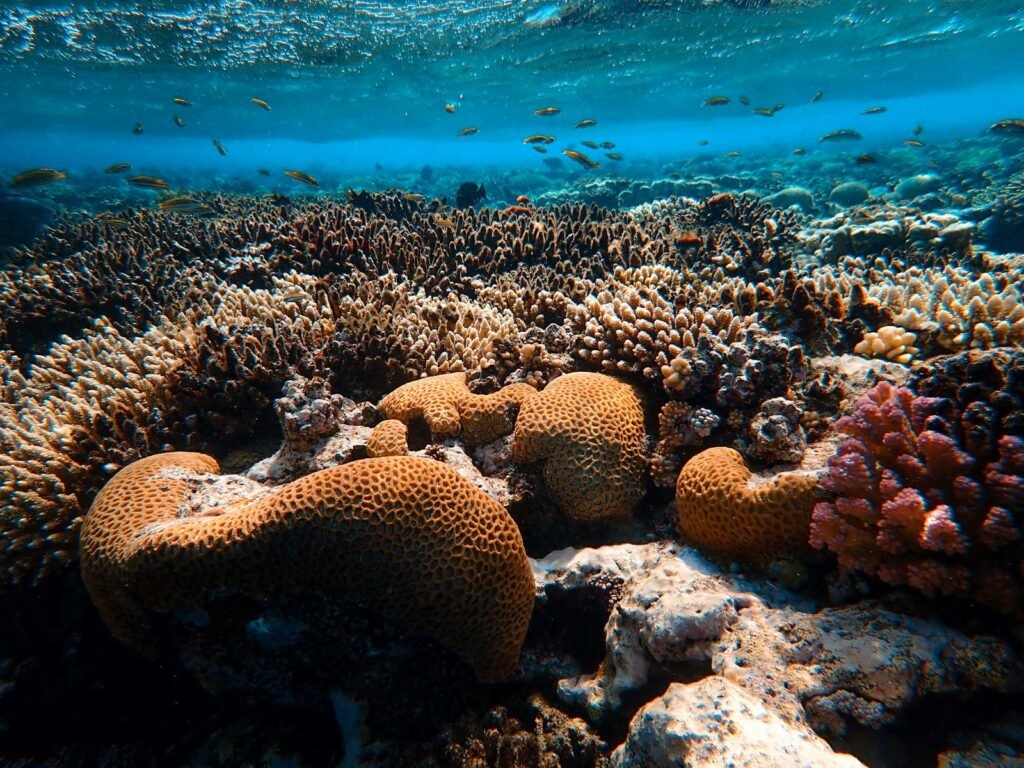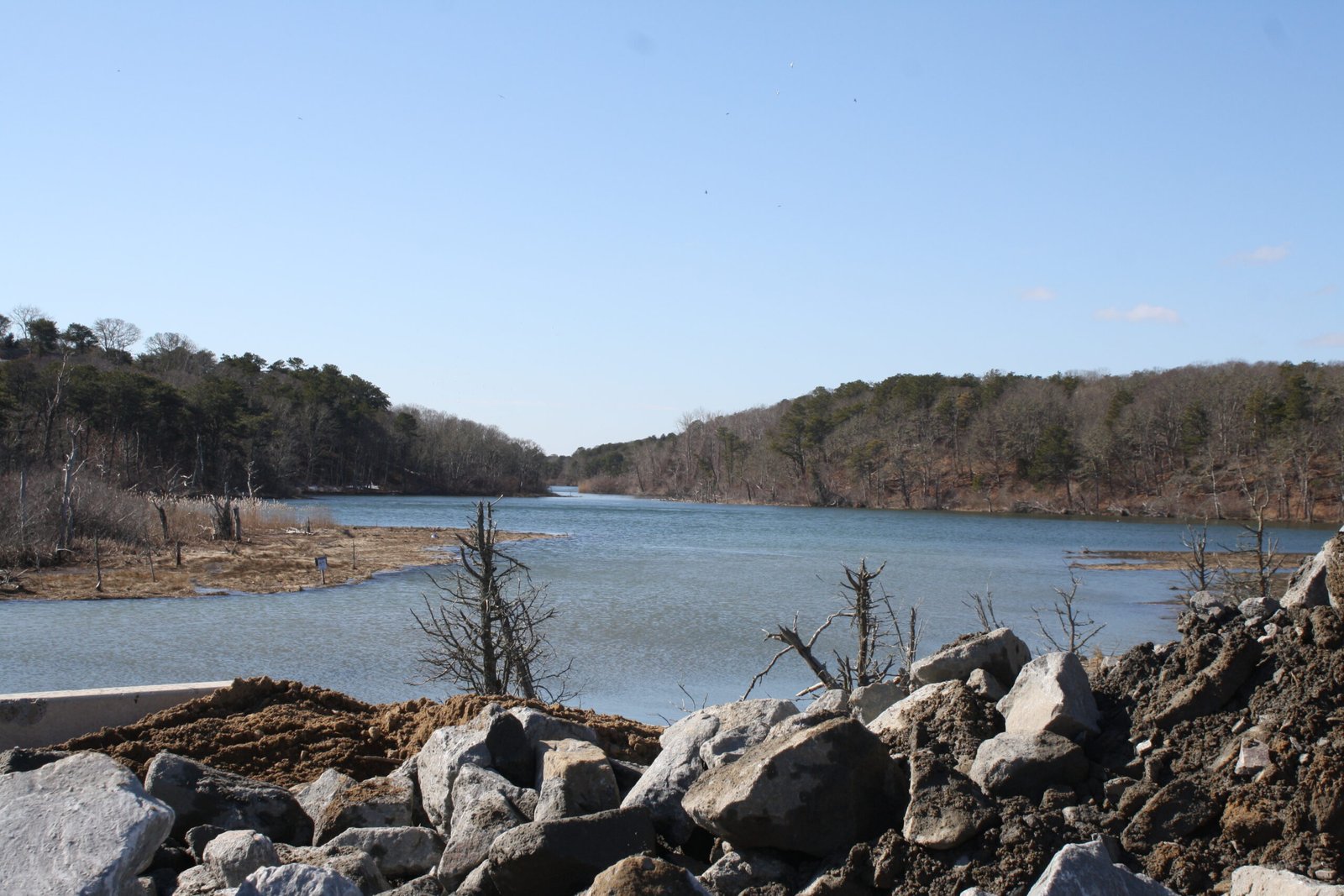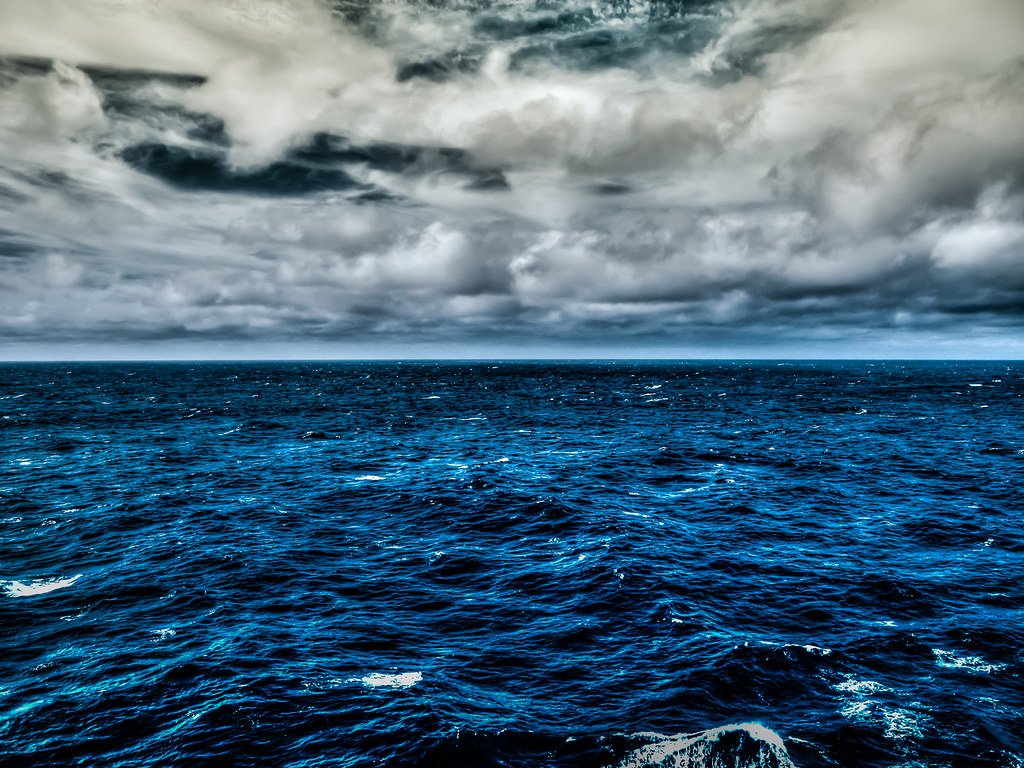Have you ever stood on a beach, gazing at the endless blue horizon, and felt like you were looking at the very heart of our planet? What if I told you that the ocean isn’t just a pretty backdrop for your vacation photos, but the planet’s most powerful, yet overlooked, climate champion? It’s easy to forget the ocean’s silent, swirling forces beneath the surface. But while most of us go about our daily lives, the ocean is working overtime—absorbing heat, storing carbon, shaping weather, and keeping life on Earth possible. The truth is, the ocean’s influence on our climate, our air, and even our food is far deeper and more surprising than most people realize.
The Ocean: Earth’s Mighty Climate Engine
Picture the ocean as a giant, restless engine—a system so vast and powerful that it shapes the climate for every creature on Earth. It covers more than 70% of our planet’s surface, acting like a gigantic thermostat that absorbs and redistributes heat. Without the ocean’s constant churning and swirling, temperatures would swing wildly, and many places we call home would be uninhabitable. The ocean’s currents transport warmth from the equator to the poles, creating the milder climates that make life possible in Europe, North America, and beyond. It’s as if the ocean is running an invisible global air conditioner, day and night, year after year.
Invisible Breath: The Ocean’s Role in Carbon Absorption
Every breath you take has a little bit of the ocean in it. That’s because the ocean is the planet’s greatest carbon sink. It absorbs about one-quarter of all human-made carbon dioxide emissions—roughly 2.5 billion tons each year. Imagine the ocean as a giant pair of lungs, quietly inhaling carbon that would otherwise heat up our atmosphere and destabilize the climate. This natural process helps slow down global warming, but it isn’t endless. As we continue to pump more CO2 into the air, the ocean is reaching its limits, and the balance is starting to tip.
Heat Sponge: How the Ocean Moderates Global Temperatures
Think of the ocean as the ultimate heat sponge. Over the past fifty years, it has absorbed more than 90% of the excess heat trapped by greenhouse gases. If not for this, the average temperature on land would have skyrocketed, making life unbearable for millions. You can feel this effect on a warm day at the coast—the ocean cools the air, sparing us from extreme heat. However, as the ocean warms, it’s starting to release some of that stored heat back into the atmosphere, fueling more intense weather and changing weather patterns in surprising ways.
The Great Conveyor Belt: Ocean Currents and Weather Patterns
Deep beneath the waves, powerful currents churn like a conveyor belt, moving water, heat, and nutrients around the world. The most famous of these is the Atlantic Meridional Overturning Circulation (AMOC), which includes the Gulf Stream. These currents drive everything from gentle breezes to violent storms. When these currents slow down or shift, as scientists are seeing today, weather patterns become unpredictable—droughts, floods, and harsh winters can strike seemingly out of nowhere. The ocean’s “conveyor belt” is a hidden hand guiding the climate script for every continent.
Rainmaker: The Ocean’s Influence on the Water Cycle
The ocean is the world’s largest source of evaporation, feeding clouds and rainfall across the globe. Over 85% of all rain comes from water that once rested in the sea. Without the ocean’s steady evaporation, entire regions would wither into deserts, and crops would fail. The gentle rhythm of waves lapping the shore is actually part of a massive, planet-spanning pump that brings fresh water to rivers, lakes, and fields everywhere. In a very real sense, every drop of rain is a gift from the ocean.
Climate Buffer: The Ocean and Extreme Events
When hurricanes roar ashore or heatwaves bake the land, the ocean is often the stage manager behind the scenes. Warm waters fuel the strength and frequency of tropical storms, while cooler currents can take the edge off summer heat. El Niño and La Niña—those mysterious climate patterns you hear about on the news—are born in the shifting temperatures of the Pacific Ocean. These cycles can bring devastating floods, droughts, and wildfires to far-off places, proving that the ocean’s moods are felt everywhere, whether we live by the coast or thousands of miles inland.
Oxygen Factory: The Ocean’s Gift to Our Lungs
It’s a shocker for many people, but the ocean is responsible for producing at least half of the oxygen we breathe. Tiny plants called phytoplankton, drifting in the sunlit surface waters, work like underwater forests—pulling in carbon dioxide and releasing pure, life-giving oxygen. Every second breath you take is thanks to these microscopic heroes. If the ocean’s delicate balance is thrown off by warming, pollution, or acidification, our oxygen supply could shrink, with consequences for all life on Earth.
Nutrient Highway: Feeding the Planet
The ocean isn’t just a climate regulator—it’s also the planet’s most important food source. Millions of people depend on fish and seafood for daily protein. But the ocean does more than feed us—it also fertilizes the land. Upwelling currents bring nutrient-rich water from the deep, nourishing vast blooms of plankton, which in turn feed fish, birds, and even land animals. In this way, the ocean acts like a giant conveyor belt of life, nourishing creatures great and small.
Climate Archives: Secrets in the Ocean’s Depths
Beneath the waves lies a treasure trove of climate history. Layers of sediment on the ocean floor record ancient ice ages, volcanic eruptions, and mass extinctions. By studying tiny fossils and chemical traces in these sediments, scientists can piece together the story of Earth’s changing climate over millions of years. The ocean is like a giant, watery library—its pages waiting to be read by those who seek to understand our planet’s past and predict its future.
Natural Barrier: The Ocean’s Defense Against Rising Temperatures

Coral reefs, mangrove forests, and kelp beds act as nature’s shock absorbers, buffering coastlines from storms and absorbing carbon. These vibrant ecosystems are the ocean’s frontline defense, but they are under threat from warming waters and pollution. When these habitats thrive, they slow erosion, shelter wildlife, and even help fight climate change by locking away carbon deep in their roots and branches. When they vanish, so does a crucial layer of protection for both people and planet.
Acid Test: The Ocean’s Struggle With Acidification
As the ocean absorbs more and more carbon dioxide, its chemistry is changing. The water is becoming slightly more acidic—a process known as ocean acidification. This shift makes it harder for shell-building creatures like oysters, clams, and corals to survive. Imagine trying to build a house while the bricks are dissolving in your hands. That’s the challenge facing countless marine species. The ripple effects could be enormous, threatening food chains and entire ecosystems.
Climate Refuge: The Ocean’s Role in Adaptation

As the world heats up, the ocean offers both challenges and hope. Some coastal communities are finding ways to work with the ocean, restoring wetlands and reefs to protect against rising seas. Scientists are exploring how “blue carbon” habitats—like seagrass meadows—can trap carbon more efficiently than forests on land. These efforts show that, even as the climate changes, the ocean might still offer solutions, if we’re willing to listen and adapt.
Microplastic Menace: The Ocean’s Hidden Threat
It’s hard to imagine, but microscopic pieces of plastic are now everywhere in the ocean—from the deepest trenches to Arctic ice. These tiny pollutants harm marine life and can even end up on our dinner plates. Microplastics can disrupt the ocean’s ability to regulate climate by affecting plankton and other key species. The ocean’s battle with plastic is a stark reminder that our actions on land echo through the waves, with consequences we’re only beginning to understand.
Weather Wildcard: Ocean-Driven Climate Surprises
Sometimes, the ocean throws us a curveball. Sudden changes in ocean temperatures—like marine heatwaves—can wipe out fisheries, bleach coral reefs, and alter entire ecosystems overnight. In 2023 and 2024, record-breaking ocean heat shocked scientists and sent ripple effects across the globe, driving strange weather events from Europe to Australia. The ocean’s capacity for surprise is both awe-inspiring and a little bit terrifying, making it clear that we still have much to learn.
Polar Power: The Arctic and Antarctic Oceans
At the planet’s frozen edges, the polar oceans are especially powerful climate regulators. Sea ice reflects sunlight, keeping the planet cool, while the cold waters drive global currents. As the poles warm faster than anywhere else, melting ice is changing ocean currents and raising sea levels. The fate of these icy realms is tied directly to the stability of Earth’s climate, making their protection a global priority.
Soundtrack of Life: Ocean Sounds and Climate Clues
The ocean isn’t silent. Whales sing, icebergs crack, and currents roar—a haunting, beautiful soundtrack that scientists now use to track climate change. Changes in these sounds reveal shifts in temperature, ice cover, and even human activity. By listening to the ocean, researchers are gaining new insights into its health and the pace of climate change. The next time you hear the crash of waves, remember: the ocean is speaking, if we know how to listen.
Economic Engine: The Ocean’s Value Beyond Imagination
Beyond its climate role, the ocean drives a global economy worth trillions of dollars. Shipping, fishing, tourism, and energy all depend on healthy seas. When the ocean suffers—through warming, acidification, or pollution—jobs and livelihoods vanish. The ocean’s health is directly tied to the prosperity of millions, making its protection not just an environmental issue, but an economic one.
The Ocean and Us: A Symbiotic Relationship

We are linked to the ocean in ways both obvious and hidden. The water in your morning coffee may have evaporated from the Pacific. The oxygen in your lungs could be the handiwork of Atlantic plankton. Our stories, our cultures, even our myths are shaped by the sea. The truth is, we need the ocean far more than it needs us. Recognizing this deep connection might just be the key to saving not only the ocean, but ourselves.
Rising Tides: Sea Level and the Human Challenge
As the ocean warms, currents shift and polar ice melts, sea levels are rising faster than at any point in human history. Coastal cities around the world—from Miami to Mumbai—are grappling with flooding and erosion. Entire island nations face the threat of disappearing beneath the waves. The rising tide is not just a distant threat; it’s a daily reality for millions, and a call for urgent action to safeguard our future.
The Ocean’s Future: Hope, Action, and Uncertainty
With so much at stake, the future of the ocean is one of both hope and uncertainty. New technologies and global agreements offer paths to recovery, but success depends on our collective will to act. The ocean’s power to heal and regenerate is immense, but not infinite. As we stand at the crossroads, the choice is ours—protect the ocean, or risk losing the very system that has cradled life for billions of years. Will we rise to the challenge, or let the unsung hero of Earth’s climate slip away?



